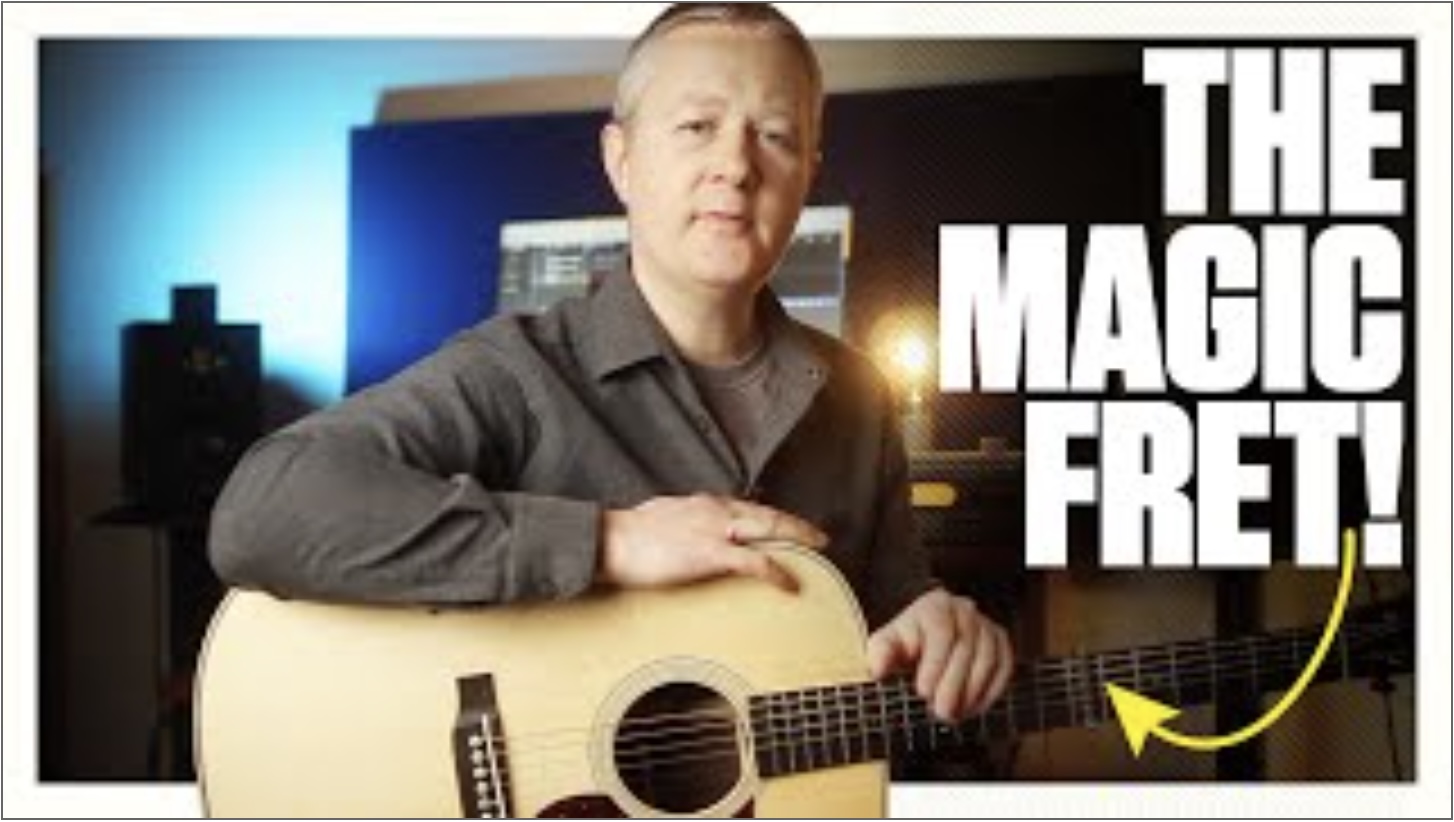Download a Free 'Talkin' Blues, Part 1' Lesson at the 'Guitar World Lessons' Store — Video
Talkin’ Blues, Part 1, an impressive compilation of 10 instructional video lessons and tabs by Keith Wyatt, is now available through the Guitar World Lessons Webstore and App.
It joins the ranks of the many lessons already available through Guitar World Lessons.
To celebrate this new release, Guitar World is offering the first Talkin’ Blues, Part 1 lesson, "Stretch Marks," as a FREE download! Note that all 10 Talkin' Blues, Part 1 lessons are available—as a package—for only $14.99.
Below, you can watch the trailer for lesson 1, "Stretch Marks," which tackles the mechanics of proper string bending.
This new collection, which was produced by Wyatt for his Guitar World print column, "Talkin' Blues," offers a gold mine of blues guitar knowledge and stylistic authority.
Wyatt skillfully teaches and inspires as he shows you how to play convincingly in the styles of such legendary guitarists as Chuck Berry, Albert King, Jimi Hendrix, B.B. King, T-Bone Walker, Albert Collins, Clarence “Gatemouth” Brown, Freddie King, Howlin’ Wolf, Bo Diddley, Johnny “Guitar” Watson and others.
Topics include how and when to use fills effectively, making licks groove with accents and swinging eighth notes, jazz-blues chord extensions and substitutions, “chicken pickin’,” low-register phrasing and more, including:
• Chapter 1: Stretch Marks Keith explains and demonstrates the mechanics of proper string bending technique and provides examples of how to incorporate half-step and whole-step bends into the A Dorian mode and the A minor pentatonic scale, with an emphasis on achieving good intonation (pitch accuracy). He then offers a stylistically authentic 12-bar blues guitar solo, inspired by Albert King, B.B. King and T-Bone Walker, that features a variety of bends applied to the one, four and five chords in the progression. Check out the trailer below.
• Chapter 2: Hey, Bo Diddley This chapter pays tribute to the rhythm guitar grooves, chord riffs and bass-line figures pioneered by Bo Diddley, with a look at their musical and cultural origins and their impact on other distinguished blues and rock guitarists who were inspired by Diddley, such as Chuck Berry, Buddy Holly, Pete Townshend, George Thorogood and the Edge.
• Chapter 3: The Art of the Fill This chapter covers the art of playing interactive, “call-and-response”-type lead guitar fills between a blues vocalists’ phrases and using good taste and discretion, so as to not to interrupt or overshadow a singer’s melody. Keith offers abundant examples of short and sweet licks inspired by such great players as Bobby Bland, Albert King, B.B. King, Freddie King and Guitar Slim.
• Chapter 4: Three Into Two This lesson addresses the musically exciting “clash” that occurs between even, or “straight,” eighth notes played on the guitar and swing eighth notes played by a drummer, as pioneered by legendary players like T-Bone Walker on “Strollin’ with Bone,” and, more famously, by Chuck Berry on “Johnny B. Goode.”
• Chapter 5: Lowdown and Dirty Keith explores the guitar’s low register and demonstrates how it can be effectively used when soloing to expand one’s range and put a fresh, ear-catching spin on phrases. Drawing inspiration from players like Freddie King, Johnny “Guitar” Watson, Clarence “Gatemouth” Brown and Albert Collins, Wyatt crafts an appealing 12-bar solo that’s played entirely on the guitar’s bottom two strings and mostly within the first five frets, employing a combination of open and fretted notes.
• Chapter 6: Accented Speech This chapter focuses on the importance and musical effectiveness of using accents and varied articulations to make certain notes stand out among others in a melodic phrase, in the same way that a dynamic public speaker enthralls an audience by varying pitch and volume word to word.
• Chapter 7: Chicken Pickin’ Keith begins by offering one-string exercises that have you alternating between picked downstrokes and upstrokes plucked with the bare middle finger, a technique known as hybrid picking, then shows you how to combine hybrid picking with some fret-hand muting to create pitchless “clucks” and how to craft soulful, rhythmically animated licks that also incorporate string bends, using the key of C and the C minor pentatonic scale to demonstrate.
• Chapter 8: “Ain’t Got that Swing?” Wyatt delves into jazz-blues rhythm guitar playing and introduces big-band-style seventh-chord voicings and the signature “four-on-the-floor” comping (accompaniment) style popularized by guitarist Freddie Green in Count Basie’s rhythm section, as well as Jimi Hendrix on songs like “Up from the Skies.”
• Chapter 9: Taking it Uptown Building upon the previous chapter, this lesson explores more sophisticated, “uptown” jazz harmony and chord voicings that utilize harmonic “extensions,” such as ninths, 11ths and 13ths, and alterations, such as flat-fives and flat-nines, to inject an exciting feeling of harmonic “tension and release” into a blues progression without fundamentally altering it.
• Chapter 10: Substitute Teacher This final chapter completes Keith’s fascinating three-part exploration of jazz-blues guitar playing with examples of how great guitarsts like Walker employ passing chords and substitutions within a blues progression to create constant harmonic motion within the 12-bar framework. Keith demonstrates how to use altered dominant chords—dominant seven chords with a sharped or flatted fifth and/or ninth—and diminished-seven chords in conjunction with a chromatic root-note approach to a subsequent chord from a half step above or below to create smooth, slick voice-leading and a dramatically rich harmonic environment.
For more information, visit the Guitar World Lessons Webstore and download the App now.


Get The Pick Newsletter
All the latest guitar news, interviews, lessons, reviews, deals and more, direct to your inbox!
Since 1980, Guitar World has been the ultimate resource for guitarists. Whether you want to learn the techniques employed by your guitar heroes, read about their latest projects or simply need to know which guitar is the right one to buy, Guitar World is the place to look.






![Joe Bonamassa [left] wears a deep blue suit and polka-dotted shirt and plays his green refin Strat; the late Irish blues legend Rory Gallagher [right] screams and inflicts some punishment on his heavily worn number one Stratocaster.](https://cdn.mos.cms.futurecdn.net/cw28h7UBcTVfTLs7p7eiLe.jpg)



